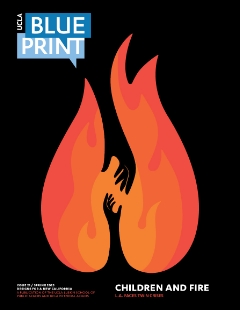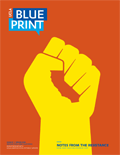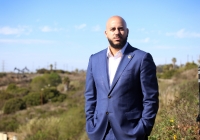In the world of education ballot measures, where ads and mailers commonly consist of a teacher standing in a classroom and grimly detailing financial needs, Proposition 28 stood out.
As the 2022 general election approached, Katy Perry, Dr. Dre, Issa Rae, John Lithgow and Barbra Streisand were among those championing the measure, initiated by Los Angeles civic leader and former LAUSD Superintendent Austin Beutner. The star-powered campaign succeeded: 64% of voters said yes to the proposal to guarantee 1% of California’s education budget, or about $1 billion annually, for arts education in public schools, with 80% going to hire teachers.
For those on the ground, the potential was enormous.
“It really is a game changer for expanding access to arts for students,” said Ricky Abilez, director of policy and advocacy for the nonprofit organization Arts for L.A. “A student can’t ever know that there’s a creative career waiting for them if they don’t have exposure to that creativity.”
The rollout began in 2023, with school districts receiving allocations based on student enrollment, and schools with large percentages of low-income learners getting an extra boost. A key was that the new money had to supplement what districts were already spending, rather than supplanting existing dollars. There was a wide berth; the funds could support music and visual arts instruction, but also theater, graphic design, video production and more.
Is Prop. 28 hitting the target? The results are mixed. Last summer, Beutner, a group of school employee unions and arts organizations charged that LAUSD was misspending some of the $77 million it had received. In February, Beutner and a collection of parents sued in Superior Court, alleging that the LAUSD and Supt. Alberto Carvalho were depriving students by not hiring enough teachers and providing misleading information to the state Department of Education. The district countered that it has increased overall arts education spending.
Beutner and his allies say other districts are doing better; they point to Long Beach Unified, which hired 150 arts teachers and aides after receiving $10.7 million in Prop. 28 money.
While LAUSD is in the crosshairs, other districts are struggling to capitalize on Prop. 28 for a variety of reasons. That’s a key takeaway in a report by Lindsey Kunisaki, a research and evaluation specialist at the UCLA School of the Arts and Architecture’s Visual and Performing Arts Education (VAPAE) program.
Tracking the spending
Arts For L.A. commissioned the report, which Kunisaki completed while serving as the group’s Laura Zucker Fellow for Policy and Research (the fellowship has now ended). Kunisaki told Blueprint that a goal was to examine implementation in the early stage. She conducted her research last summer, and the 66-page “Exploring Prop. 28 Implementation and Public Perceptions in Los Angeles County” was released in November.
The report was driven in part, Kunisaki said, by the benefits of arts education — from an impact on social-emotional health to providing some kids a reason to attend school — and how low-income students have historically had less arts exposure than their more affluent peers.
“This opportunity was so important, because it could be a way to close some of those gaps,” said Kunisaki, who is also a Ph.D. candidate in the School of Educational Studies at Claremont Graduate University. “It’s worthwhile to really look at how Prop. 28 can expand those pathways.”
Kunisaki gathered information in multiple ways. She conducted interviews with arts leaders from 10 school districts of various sizes in Los Angeles County. Interviewees were granted anonymity, and their answers to questions were used to analyze how Prop. 28 was being put into play. A second component consisted of 264 people completing a 59-item survey. Their responses to questions evaluated broader public understanding of and involvement with Prop. 28.
Although every public-school district in California received Prop. 28 funds, the ability to take advantage of the money varied. Kunisaki classified three districts as taking “Rapid Action,” while four were “Building Momentum,” and three more were “Waiting to Hire.” The districts were given pseudonyms for privacy (e.g. Valley Unified). No overall correlation was found between size and using Prop. 28 money. For example, two large TK-12 districts made the “Rapid Action” ranking, while two others were in “Waiting to Hire.”
Yet there was a through-line, according to Kunisaki, and it depended on the overall commitment to arts education. The best-performing districts, she said, had someone in a leadership role who valued and deeply understood the arts sector.
“The main commonality was that they had a strong and clear strategic vision for the place of the arts in their districts,” Kunisaki said. Such a launch point, she said, “gave them a starting point they could build on.”
Districts that fared better, she added, also had some kind of arts advisory council that engaged with different constituencies, including parents and community partners. If these existed before Prop. 28, even better.
“I think having those things in place from the get-go put these districts in a really good position to envision their ideal arts education landscape,” she said. “Then once the Prop. 28 funds came in, they were able to hit the ground running.”
Other obstacles
While being prepared helped school districts, various hurdles could be difficult to clear, particularly those involving space or scheduling. Kunisaki’s report said that, even after Prop. 28 funds arrived, a school literally might not have a room for a photo lab, or a place on campus to hold a dance class. In an elementary school, a teacher could have trouble squeezing in arts instruction amid all the other subjects that had to be taught. The problem could be exacerbated if test scores were low.
Then there was staffing. “In particularly short supply are certificated arts teachers,” the report said. Instructors who are certificated, it said, are authorized to interact with students independently; non-certificated instructors require supervision.
This could lead to further issues, with some districts competing for a limited pool of qualified teachers. The report detailed instances where a district was ready to hire, but someone who had been scheduled for an interview never showed up. This delayed implementation.
Given the numerous challenges, the report offered a hefty set of recommendations. Kunisaki suggested growing the teaching pool, in part by making it easier and more affordable for working artists to receive teaching credentials.
The report recommended that philanthropic organizations subsidize credential or certificate programs, which would help working artists who have to put paid gigs on a back burner while they complete the lengthy process.
There is also a role, Kunisaki said, for UCLA and other institutions.
“We have been committed to this question of how can we prepare these great artists who are coming out of UCLA to bring their creativity and their skills into the classroom,” Kunisaki said. “There is a need for specifically certificated staff, and that’s something that we in the VAPAE program are thinking about and working with. … Statewide, we are all working together to try to figure out how we can meet this need in a hurry.”
While the challenges are broad, the work is not occurring in a vacuum. Especially if a district has a full arts strategy, Kunisaki said, Prop. 28 funds can be “braided” with other arts-oriented financial streams, as well as private money.
“Prop. 28 is one piece of a much larger puzzle,” she said.
Additional benefits could come from involving more people. The report’s public-perception component found that, while many survey respondents were aware of Prop. 28 and they valued arts education, few felt involved or engaged with its implementation in local schools.
A need for transparency about how funds were being spent was also cited.
Although the report shined a light on what was happening with Prop. 28, Kunisaki acknowledged the limits of her work. They included a small sample of interviewees and, among survey respondents, a disproportionate number of highly educated, older white females.
The study, she said, provided “a snapshot of the early, early days.” Abilez said the snapshot had merit, and that the report influenced Arts for L.A.’s recently released policy and advocacy agenda. The organization is calling for subsidizing credentialing, and is trying to help community-based organizations better navigate Prop. 28.
The overall situation is a reminder, Abilez said, of something seen time and again with ballot measures: Getting approval is just step one.
“I think we get so excited when new funding passes,” Abilez said, “that we forget there is a whole process to actually implementing that funding.”
In this case, once the money rolls, it’s kids who benefit.

























